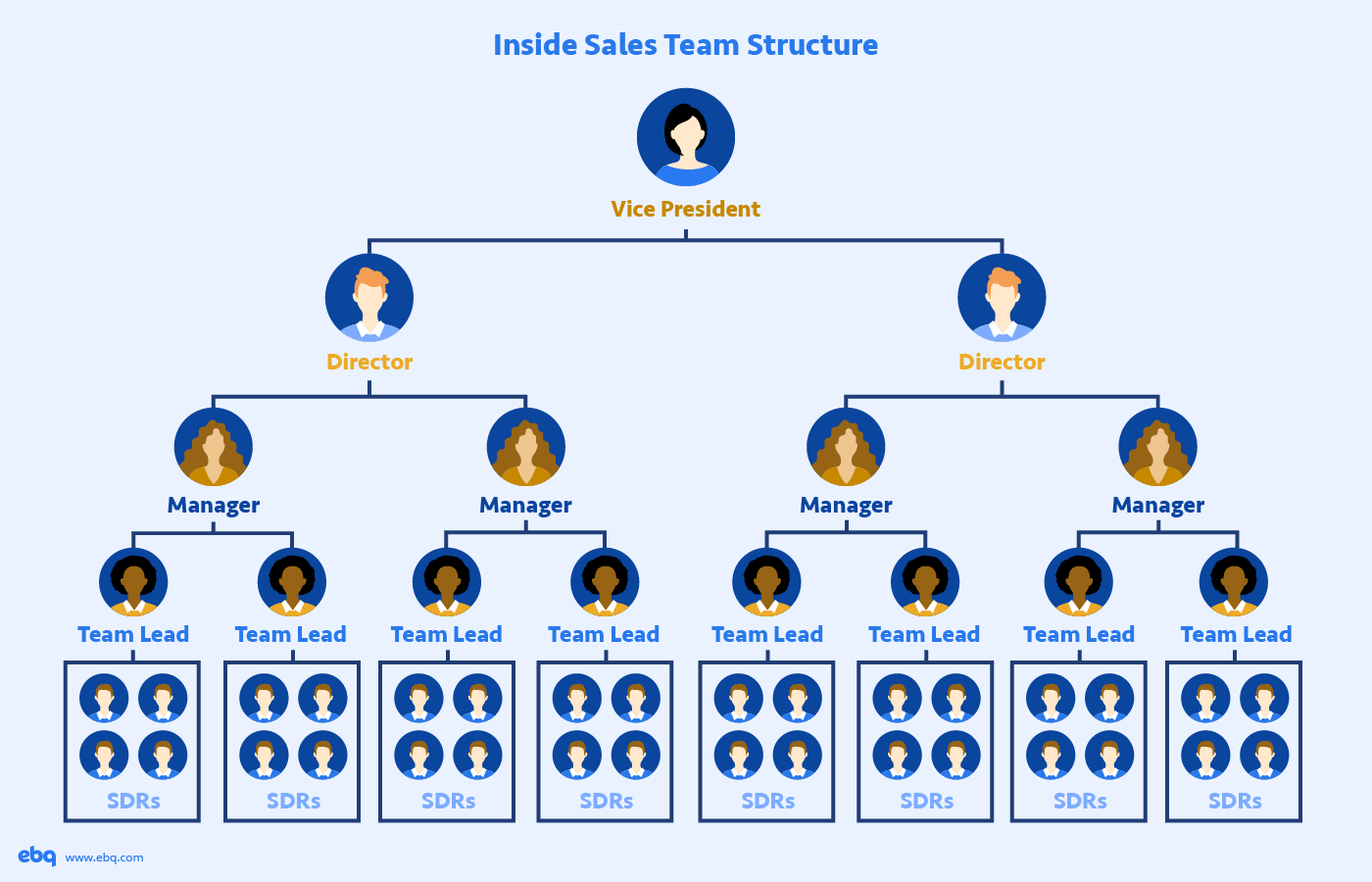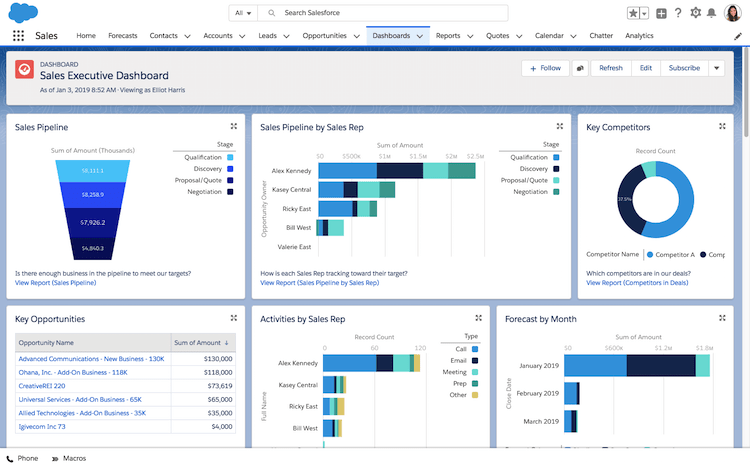Inside Sales Management Best Practices: A Guide to Boost Revenue


Donte Hamilton
This post was originally published in August 2022 and has been updated for accuracy and comprehensiveness.
As a sales leader, it’s your job to follow inside sales management best practices to ensure your team is consistently able to hit their goals. Developing a solid sales enablement strategy is key to guiding your team in the right direction.
Strong leadership in an inside sales team can enhance the sales process and boost revenue. A recent study indicates that a leadership team that provides sales coaching has been proven to increase win rates by 29%.
In this post, we will explore inside sales management best practices based on our 16+ years of experience in B2B sales. We will walk you through everything from onboarding to investing in a solid sales enablement strategy.
Continue reading to see how you can improve your inside sales team by developing a strong inside sales management style.
The Essential Guide to Sales Pipeline Management
Learn our strategic approach to tracking prospects throughout the pipeline, forecasting revenue, and closing more deals.
Expand your sales leadership structure
As your sales continue to increase, the need to expand both your inside sales team and your leadership team will become apparent. Developing a leadership team will allow top-level leaders to focus on their duties instead of getting overwhelmed managing individuals or handling administrative tasks.

Let’s take a look at who should be included in your sales leadership team:
- Vice President: The Vice President of your leadership team is in charge of handling tasks like integrating new strategies, standards, and processes to reach the company’s sales goals. They should also prioritize creating a team culture that encourages growth.
- Director: A Director handles the specific division, territory, or sector of the sales organization. Their job is to ensure that each manager achieves their sales goals while building upon best practices and daily strategies.
- Manager: A manager oversees the sales reps to ensure that they are consistently reaching their monthly targets. They also regularly check in with their team to ensure that everyone is successfully hitting their goals.
- Team Lead: A team lead works directly with the team. They help train individual team members and ensure everyone follows best practices daily.
Each leadership role plays an integral part in the functionality of the inside sales organization. From the broad picture to the daily tasks, incorporating an organized structure will help everyone on the team reach their goals. A big reason our clients decide to outsource their internal sales responsibilities to us is that we use these tiers of management in our services.
It’s important to consider building a successful inside sales team that goes hand in hand with an organized leadership team. Creating specialized roles and delegating certain tasks to those specialists will help build on your teams’ strengths while easing the workload. Inside sales reps (SDRs) and business development reps (BDRs) start the conversation with a prospect, then hand it off to the closing rep to seal the deal.
Once you have started building out your inside sales leadership team, it’s important to consider how you’re handling sales enablement for your team.
Inside sales enablement best practices
When we talk of sales enablement, we are referring to the act of providing your sales team with the necessary tools and information to sell your solution. Neglecting the importance of sales enablement efforts would negatively affect any B2B company.
In fact, 55% of sales executives agree that implementing sales enablement solutions is essential to boost sales productivity. Additionally, 84% of sales reps can reach their sales goals when their employer integrates a high-quality sales enablement solution.
Improve your sales enablement process by:
Integrating a CRM platform: A CRM platform is software that allows your sales team to track and organize customer information, past conversations with leads, and success metrics. A high-level leader (director or vice president) usually decides which platform to invest in.
Building call scripts and talk tracks: A manager or team lead can create these call scripts and talk tracks so the reps can use them to highlight the benefits of your solution and easily handle objections when speaking with prospects.
Providing sales collateral: A document containing information about your products and services, your processes, and your company’s competitive positioning will help the inside sales team converse with a prospect. This is usually created by combining the efforts of the sales leaders and the marketing department to create something that is easy to understand and appealing to the potential customer.
Prioritizing coaching: Every sales rep will naturally have their own set of strengths and weaknesses. Leadership members need to take time to coach the sales team members so they can continue to grow and reach their goals. It will also show that the leadership team supports the inside sales team and that you are all working together to reach a shared goal.
Evaluating and optimizing: Creating and implementing a sales enablement strategy is not a one-time thing. Whether it’s monthly or yearly, set aside some time to track how your enablement process is going for your team and how it’s helping them reach their goals. Always be open to making changes to the process and understand that it’s for the betterment of everyone involved.
Are automated sales tools beneficial?
It can be tempting to invest in sales tools as a shortcut. While using things like autodialers or prerecorded voicemails may sound like a way to save time, they could be a detriment to your success. Sales are all about forming a human connection with your leads. These tools may take away from that experience and cause the lead to look elsewhere for a solution.
Consider the risks of relying on inside sales automation technology before deciding to use it. Reaching your sales goals goes beyond investing in the right tools. It’s essential to find the right people for your team to see success.
How to hire sales representatives
To feel confident in who you are hiring for your sales team, you should start the process by determining what attributes you are looking for in a salesperson. Take the time to create a list of non-negotiable traits and skills you want your recruiter to look for during their interview with candidates.
When hiring an inside sales rep, look for the following traits:
Experience level: While most inside sales roles are entry-level, it’s still important to look for candidates with relevant experience. This can include any role that requires customer service, whether they were a waitress or a retail associate. If they can work well with customers, that can be considered experience.
Skills: Make sure the candidate can listen to your prospects’ needs, properly address their pain points, and seamlessly deliver your solution’s value proposition. Being well-spoken and organized is key when handling prospects day to day.
Personality: In a role that requires a lot of talking and interacting with strangers, it’s essential to find someone who is outgoing and confident. They should always seek to learn new skills and improve their current ones.
Resilience: Sales is a notoriously difficult industry. You need someone who is okay with hearing “no” multiple times a day without getting discouraged. A sales rep should be able to stay consistent and positive so they can find that “yes” that will turn into a closed deal.
How to find potential candidates
Creating performance indicators is a great way to get started when looking for a new candidate. These will tell you if a candidate is qualified or not. For example, in some instances, companies assess relevant KPIs in their candidates’ resumes before moving to the next step.
When you feel you have found a handful of candidates that fit your criteria, you can begin the interview process. A great way to test out the qualities of each candidate is by role-playing a sales call and coaching them then and there. Not only will this give you insight into how they handle a call, but it will also show how they receive feedback.
For more information on effectively hiring sales reps, check out our blog post What to Look for When Hiring SDRs. We dive into the skills we often look for when hiring talent to join our company.
Save time in the hiring process by outsourcing your inside sales team. An outsourced team will take away a lot of stress and time it takes to interview candidates before you find the right one. With this task off your plate, you can focus on working with your sales team to ensure everyone is on the right track instead of determining if each individual has the right synergy with your company.
Although it’s always a relief to find the right candidate, you can’t forget the importance of proper training so that they understand your unique sales process.

Subscribe to EBQ's Bimonthly Newsletter

Subscribe to EBQ's Bimonthly Newsletter
Create an effective inside sales onboarding process
Once you have built your team, it’s time to train them on your workflow. This is crucial, considering 26% of sales reps claim that their training was ineffective. This is an opportunity to set your company apart by giving your sales team the resources and training they need to reach their targets.
A few ways to successfully onboard your new inside sales team include:
- Hand out a playbook: Your SDR playbook should contain the basic structure of your unique sales processes.
- Define rules: Often included in the playbook, you should clearly define how to use each tool available to your inside sales team.
- Set up sales enablement processes: As we said above, preparing your SDRs with tools and useful information will set them up for success in the future.
- Establish expectations: Be clear on what goals you want each sales rep to achieve within a certain timeline. This will help your reps understand what you expect from them.
Ideally, a new sales team member would take about 3 months to be fully ramped up. However, studies have shown that, on average, a sales new hire won’t be fully productive until about 12 months into their tenure.
Continuous training is crucial for further revenue growth. A team with consistent training is said to yield 50% higher net sales per employee than companies that don’t prioritize regular training.
As we stated above, onboarding new sales reps can take up a lot of your time and budget. To alleviate this additional stress, many companies decide to outsource their inside sales team. At EBQ, our inside sales team is continuously trained on best practices, upskilled, and can efficiently onboard new sales reps to sell new solutions.
Whether you build your team internally or outsource your sales team, an essential duty of any sales leader is to evaluate the success of your efforts. This usually means creating an intuitive reporting process.
How to build your sales analysis reports
An important task for each leadership team member is to evaluate the productivity of your inside sales team regularly. However, each leadership role will look for different KPIs to ensure their individual goals are on track to be met.
We have dissected what information should be included for each sales leadership team based on their titles.
Vice President and Directors
The vice president and director are usually interested in the big picture, and they want to ensure the organization as a whole is reaching its goals. They will also focus on forecasting revenue, so we suggest the people in these roles track sales pipeline metrics.
These metrics may include:
- Number of opportunities
- Average sales cycle length
- Average deal size
- Win rate
- Pipeline velocity
Managers
he main objective the sales manager needs to oversee is that their team of inside sales reps consistently reach their quotas. Managers can holistically measure sales development efforts if they have access to SDR metrics. They can also use these reports to search for future coaching opportunities. If you’re looking to hire a new SDR manager, we wrote a helpful blog about specific job descriptions, interview questions and more.
Your manager may want to track the following SDR metrics:
- Number of records touched
- Touch frequency over time
- Records added to the database
Team Leads
Giving team leads access to individual sales reps’ metrics will allow them to see where they may need training or additional coaching. It’s important to track your reps’ cold-calling metrics to ensure they are always following best practices.
Individual cold-calling metrics to measure may include:
- Connect rate
- SQL conversion rate
- Meeting completion rate
How a CRM could help you build reports
Investing in a sophisticated CRM platform will assist you in tracking and collecting useful metrics to show to your sales leadership team. An example of sophisticated CRM software is Salesforce. Like many other CRMs, Salesforce automatically generates reports for you. With filters you select, you can receive daily snapshots of your team’s progress in the dashboards. To help you get started, check out our Beginners Guide to CRM.

The Essential Guide to Sales Pipeline Management
Learn our strategic approach to tracking prospects throughout the pipeline, forecasting revenue, and closing more deals.
Achieve your inside sales manager goals
The sales leader’s responsibility is to make the decision to properly and effectively invest in your sales team. We recommend assessing your sales team structure, sales enablement processes, and inside sales procedures.
Don’t forget the goal is to create a useful and standardized process that you can easily repeat in your sales team. If you don’t have the time or resources to find the right salespeople and managers to join your internal team, consider outsourcing your team.
We give each of our clients an assigned project manager, consultant, and as many sales reps as you need to be successful. This allows you to scale your business in the future without waiting to start your sales processes. To learn more, check out our outsourced sales development services page.

